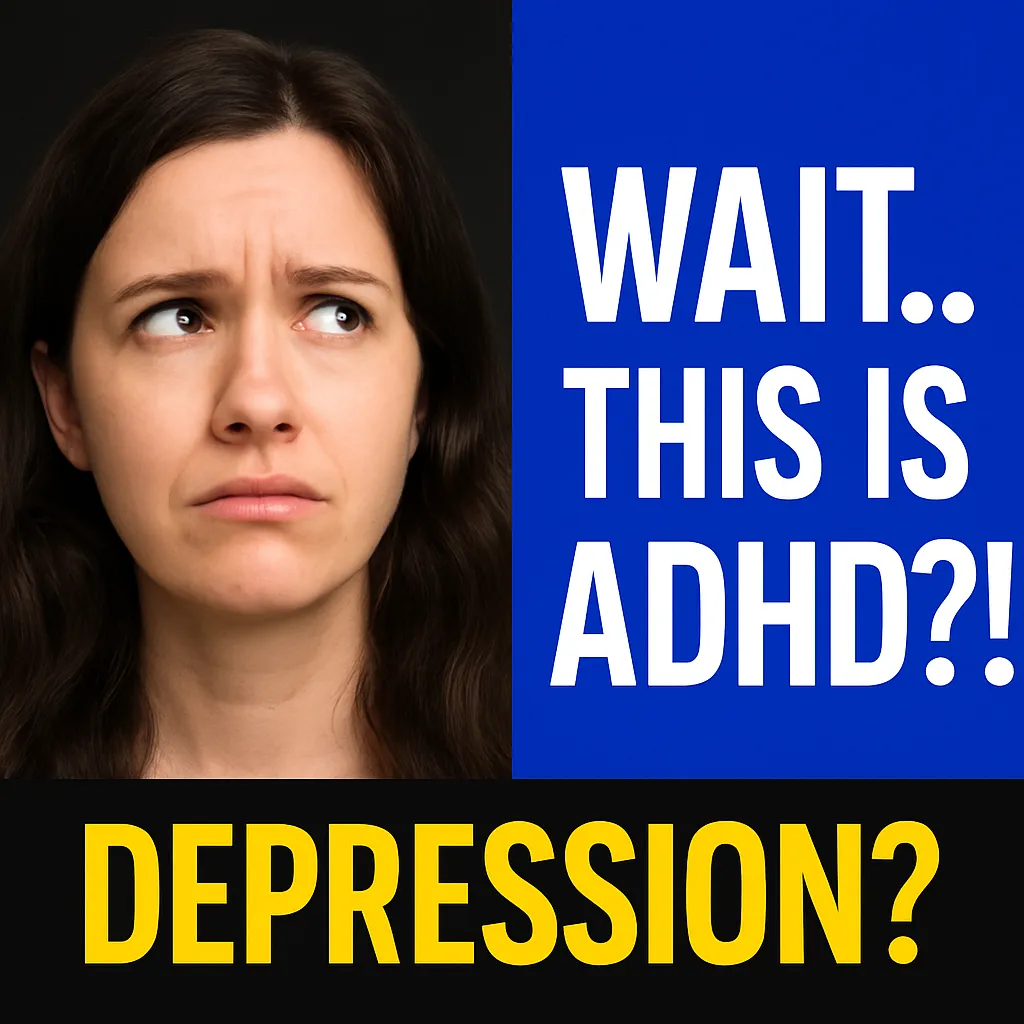Have you ever been in therapy, year after year, working through deep emotions—shame, sadness, even trauma—yet still felt like something was missing?
If that resonates with you, you’re not alone. A clip recently resurfaced of comedian Trevor Knorr that struck a nerve with many. In it, he raised a question that’s more common than we realize:
What if what looks like depression… is actually undiagnosed ADHD?
When Shame Isn’t the Full Story
Trevor shared a conversation he had with another comedian. This person had been connecting everything in therapy back to shame: shame around relationships, decisions, and not being able to “get it together.” But Trevor paused and asked a question that changed everything:
“Has anyone tested you for ADHD?”
Because sometimes, what looks like emotional sabotage… isn’t emotional at all. It’s executive dysfunction. And traditional therapy might not address it if no one’s seeing the full picture.
ADHD Isn’t a Lack of Attention
Trevor explained ADHD in a way most people don’t expect. It’s not that you can’t pay attention—it’s that you can’t control what you pay attention to. Your brain latches on to the most interesting thing in the room, even if it’s a bird tapping on the window during a serious conversation.
From the outside, it can look like rudeness. But inside, the ADHD brain is still fully online—just focused somewhere else.
Why So Many Creatives Have ADHD
Trevor also pointed out a fascinating link: a lot of comedians and creatives have ADHD. Why? Because pressure, performance, and unpredictability force hyperfocus—something the ADHD brain thrives on. Environments like comedy or live performance reward that wiring instead of resisting it.
Have you ever thrived in chaos but struggled in calm? That could be why.
Trauma, the Nervous System, and Why Talk Therapy Falls Short
The conversation deepens when Trevor talks about trauma and PTSD. Sometimes, our nervous system stores experiences in ways our conscious mind can’t access. It’s why certain moments—like a siren blaring or a partner asking a question—can trigger a fight-or-flight response even when there’s no danger.
This disconnect between body and brain is where traditional talk therapy can miss the mark.
Rewiring the Brain-Body Loop
Trevor later tried ketamine therapy—not a drug trip, but a tool used by trained therapists to help break the cycle between panic in the body and overload in the brain. He said it gave him space to finally process things differently.
It wasn’t a miracle cure. But it was a piece of the puzzle—one that made space for healing in a new way.
The Relief of a Diagnosis
But what hit the hardest for many people watching? When Trevor shared how just the diagnosis of ADHD helped him more than most medications.
Because suddenly, everything made sense:
The procrastination
The zoning out
The inability to “just get it together”
It wasn’t laziness. It wasn’t depression. It wasn’t a character flaw. It was neurodivergence.
Understanding Changes Everything
Now, Trevor makes a point to explain his ADHD to the people closest to him—his friends, his family, his partner. He tells them:
“I’m not tuning you out. My brain just took a detour.”
That awareness creates space. It softens judgment. And it opens the door to compassion.
What If You’re Not Broken?
If any part of this hits home for you, maybe it’s time to ask:
What if I’m not broken? What if I’m just wired differently?
Because ADHD isn’t just about focus—it’s about how you process the world, emotions, and even your identity.
You deserve understanding. You deserve the full picture.
And you don’t have to figure it all out alone.
Subscribe or follow for more real talk about ADHD, trauma healing, and breaking free from labels that don’t fit.

